
Mopeds need to be parked over the winter when you live in Canada or northern states where winter more than just happens... even though a moped will drive quite well in the snow, but only if your tires have good tread... even though a moped will start and run at -20°C, but only if you mix a little dry and use the choke... the combination of -20°C and snow will convince you that there is a time and a reason for hybernation. If you will be working on your ride over the winter then the nice warm shop or basement or living room or kitchen will be enough to protect the machine from the elements. However, you may need to cold store your ride, which needs some preparation for the winter to make sure that humidity does not ruin your investment.
When you store your mopeds in a barn there is some preparation work to be done. Even if you are not parking yours in a barn, perhaps some of this process will be of use for long term storage of your steed, if the need arises...
If you have a dampness problem then, before you store the moped, fill the fuel tank with kerosene, heating oil or diesel fuel. This will help to prevent the formation of rust in the fuel tank. These fuels are less volitile and less flammable than gasoline or fuel mix so there is less risk during storage. Spray your chains well with oil and ensure that every link gets some; do the chassis lubrication and other grease points including oiling cables and speedometer head and drive. Ensure your tires have air in them so you do not get a bump or flat spot on the rubber.
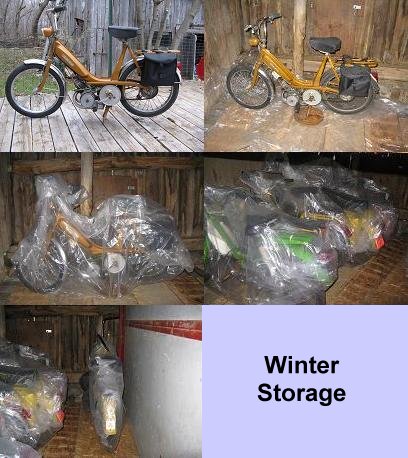
We place ours in a custom made plastic cocoon...
Place 4mil or thicker plastic on the floor
10ft × 11ft will fit a Mobylette, Cady, Batavus Bingo, Rizzato, Yammy QT or Honda Camino
Place a piece of plywood or 1 foot by 1 foot plank in the center
Place the moped on the plastic with the center stand resting on the piece of wood
Bring the sides up to overlap each other at the seat of the moped
Tape the two halves to each other leaving the plastic a little loose so it will not rip
Bring the plastic together and overlap over the handlebars and tape to each other
If the plastic is not large enough to meet while covering the handlebars, tape it so it makes a nice collar at the base of the handlebars,
Use a second piece of plastic for just the handlebars
Fold over the end at the front wheel and tape it closed
Fold over the end at the back wheel and tape it closed
Before you seal the ends of the moped bag you can also place some silica gel inside the bag before you tape it closed. Silica gel is available in fair size quantities from moving companies or you could find it in pet supply stores as cat litter.
Your moped is now sealed against the elements and should be as fresh when you unwrap it as when you put it away. If you have more than one moped sharing the storage area, you may want to park them so that you can get access to all of them in case you need to move one moped. We row ours up so that the ones that will be overhauled or fixed during the winter can come out of storage without disturbing all the rest.
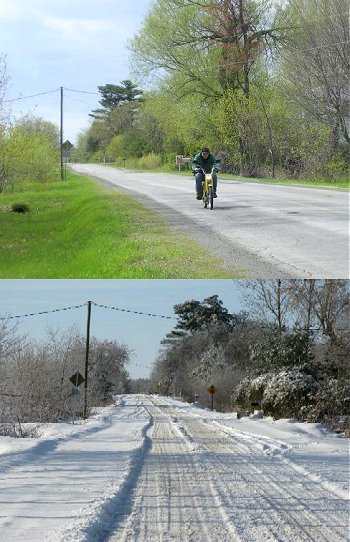
Shortly after preparing the mopeds for their winter sleep (see 200901cammag) the snow started to fly and the so-called off season for mopeds began in earnest. Most of the stable of fractional powered toys were safely under cover, however the Motobécane Cady Speedster was in need of some finishing touches to complete the conversion to an AV7 motor.
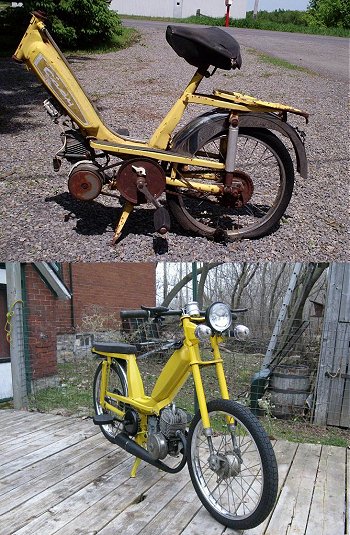
For a bit of background, we decided to title her as The Cady Speedster last spring when we acquired her from the previous owner. She was "thrown in" to a purchase of a parts Motobécane 50V; she was a forlorn looking example of neglect: no front end at all, seized motor, clutch, chains, pedals, swing arm, broken shocks, bent frame, fractured seat... all held tightly together by what appeared to be more rust than metal. To add insult to injury, I received the joking challenge of "bet you can't do anything with THAT"... so we had to get her just to the point of running her around the yard before packing her away for hybernation.
As our winter workshop is the basement of the house, we are limited to the types of work we can do as we can not muck about with running engines, painting or anything that would envolve petrol or chemicals. So far over the winter we have tackled two project mopeds for the coming season.
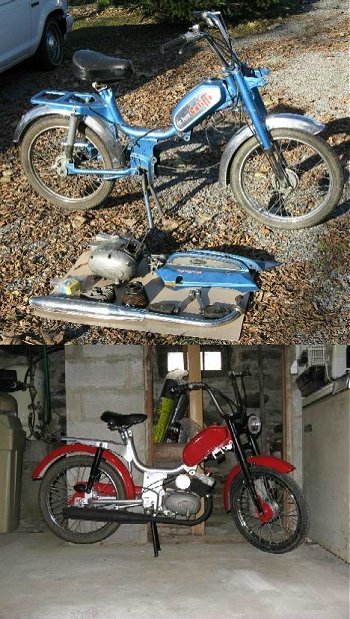
One of the projects that had help from fellow members of the EACC was the Rizzato Callifo we had purchased in late October. We really did not need another moped to add to the collection, but it was difficult to pass up the loose collection of Italian moped parts for $50. The previous owner had gotten into an overhaul a lot deeper then they had the skill to reverse. Many parts were lost and those parts which were actually located were missing fasteners and fittings. The entire moped was at the stage of disassembly where it fitted in the boot of our Toyota. Upon arriving home I needed to add nuts to the wheel axles and find some bolts to put the steering head together in order to take an initial photo of her. After which we hussled her down into the workshop and took her apart down to the frame in preparation for a repaint. I brought the mudguards, frame, forks, fuel tank, tinwork and brake carriers off to work and painted them in the receiving dock one weekend before the cold weather took hold. Then came the challenge of reassembling the moped, engine and transmission without any guide or workshop manual. We are very happy to report that we have the moped together for the most part, the final tinkering will need to wait until spring returns so we can put fuel in her and do final adjustments and tuning.
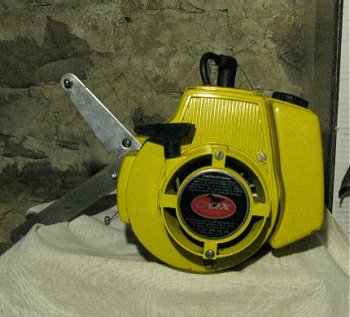
The other project we have on the go is a 1964 CCM bicycle with a 1966 Cox-Bronco engine. CCM is a Canadian brand of cycle and the Cox-Bronco was made for one year only by an American company who usually produces tiny engines for radio controlled craft. The engine was only used for a short while before being stored in a neighbour's barn for over 40 years. Most of the work it needed was to replace all seals which had dry rotted, parts such as the air filter was pure powder and had to be carefully removed so it would not gum up any carburettor orifaces. It did come with a lot of history, including the manuals, original warranty card and even the receipt from Ted's Hobby Shop in Pointe Claire, Quebec - $79.50 - a full $28 more than the bicycle cost. This project should carry us ino the nicer weather when we can start to tune and try out our projects and get our daily drivers back onto the road.
Well, in case anyone is interested - here is what is up in our little section of paradise in Canada.
The Rizzato went together rather well; aside from the global parts hunt, the only difficult part was fitting the piston to the cylinder. The cylinder had sustained some deep gouges so I had to oversize the cylinder after hunting down the piston in Italy and the rings from the UK.
Another challenge this spring was to reassemble a 1977 Honda Camino that we had purchased as an unbelievable bargain. The Honda was originally sold to a gentleman in Belgium who brought it over with him when he emigrated to Canada. Unfortunately, the waterfront home he was living in was a victim of a spring flood and the Camino had some water damage. The unbelievable part is that I had spent some hard earned money on a frame with a box of what was originally an engine. The motor had apparently been a victim of a basement flood, the frame even had evidence of a high water mark just above where the pedals reach at the tops of their arc.
We happened to have the leftovers of an old NC50 Honda Express; the engine was raided of all possible parts that might interchange with the PA50 motor. In spite of the supply of previously enjoyed parts, disassembling the Camino motor, which was seized into basically a single lump, was a huge challenge. We only need to purchase a new petcock and the Camino will be ready to be put back on the road. Currently the PA50 has a temporary fuel tank culled from an old 1955 IronHorse lawn mower.
Spring has sprung and we are slowly heading on our way into summer. I have just finished the June copy of The MAC from the EACC, which has given me a prod to put together a little blurb about the year's first run and the CCM-Cox.
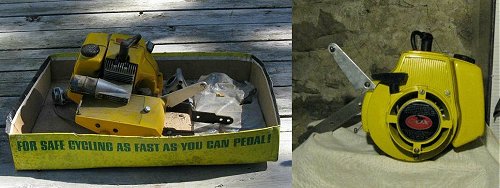
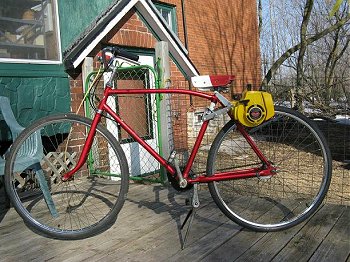
The cycle portion as mentioned in the last edition of CAMmag is a 1964 CCM bicycle. Of all the components to replace or redo the worst part was trying to locate a pair of 28×1.25 tyres. The tyres that came with the cycle were barely capable of containing the inner tube and once up to pressure some of the cords were exposed through some rather ominous looking cracks in the casing. A trip into the closest town proved fruitless - the staff at the cycle shop seemed to be oblivious to the existence of anything on the planet prior to the 1990s - the decade in which all the employees were born, apparently. A trip towards Montreal did prove to be the better direction for the tyres - Pauls Cycle where the cycle was originally purchased were quite happy to hunt around for the correct size for the bicycle. Though the new treads seemed to have a high content of unobtainium, they were able to order a pair of tyres. First official outing of the year and the a 1966 Cox-Bronco engine ran like a champ. I have to get used to working with the quasi-clutch on the engine which actually only lifts the roller from the tyre, otherwise there is quite a conflict going on behind me with the motor wanting to turn a wheel which is trying to stop. The Bronco engine is also the noisiest of the fleet, which is not so much a problem going down the road near our farm, however it is not very warmly welcomed as I ride into town on an errand.
The year's first run was to the Ste Anne de Prescott Antique Day (see separate report).
Now there is time to prepare for the BIG meet on the first weekend in July just south of Ottawa at St Albert Cheese Factory. The meet is the Canadian Vintage Motorcycle Group annual bash: lots of cycles big and small, lots of people selling off extra bits, spares and entire cycles. A few years back Mac bought a very well loved Lambretta at the sale and has been using it as his principal transportation. The CVMG have always invited those of us who love the smaller engines bikes and made sure we feel welcome.
I will send an update with pictures after that run... until then - Happy Trails
[Text and photos © 2009 D Baker.]
| CAMmag Home Page | List of articles |